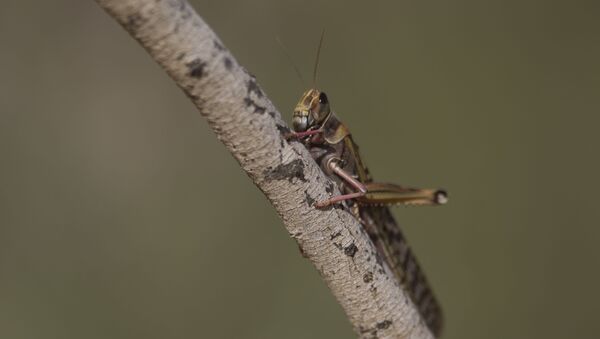A United Nations report, cited in a press conference Friday, warns that petrifyingly large swarms of locusts are expected to hit East Africa, and the timeline is no less frightening – in the next few months, making it the worst infestation in Ethiopia for the past 25 years, and in Kenya in 70 years.
One year its fall armyworm, then drought and finally when it rains - locusts!! African ag needs modern tech - irrigation, improved seed, #Biotechnology, better markets, insurance. We need it all pic.twitter.com/hbb5tn9gq7
— Patricia Nanteza (@PatNanteza) January 24, 2020
The invasion poses “an unprecedented threat to food security and livelihoods” in the area, says a report by the Food and Agriculture Organisation (FAO), adding that the issue is “extremely” acute in Kenya, Ethiopia, and Somalia, where locusts have already descended in eye-watering numbers – up to 150 million jumping critters per square kilometre (0.39 square miles.)
So the locusts made it to ukambani and I feel like everyone else wasn’t dealing with them right 😂 kwa isitwa ya yesù! pic.twitter.com/0iPmAQUu2Q
— kelvin kaesa (@kelvinKaesa) January 24, 2020
Last but not least, the pest migration stands a solid chance of spreading, with a “potentially threatening situation developing along both sides of the Red Sea, where ongoing breeding is causing locust numbers to increase on the coasts of Egypt, Sudan, Eritrea, Saudi Arabia, and Yemen” – a fact that puts into jeopardy agriculture and general livelihood of vast swathes of land, including the Middle East on both sides of the Persian Gulf.
The BBC’s estimates echo the alarming scenario, as its report says the number of locusts could increase 500-fold by June.
Every square kilometre crawling with the insects, can consume as much as 35,000 people in just one day, according to the FAO, as adult locusts can easily eat their own weight (about 2 grams) of vegetation and travel up to 150 kilometres in 24 hours.
Heavy rain in late 2019 is thought to be the primary cause for the prolific generation of locusts, as data from the International Research Institute for Climate and Society show that parts of East Africa and the Sahel region have received as much as 15 inches more rain than normal in the autumn of 2019.
Warmer temperatures can also play a role in forming the frightening swarms of pests now out on the loose, with environmental agencies sounding an alarm. The UN has reportedly released $10 million from its Central Emergency Response Fund to counter the outbreak.




